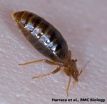(Press-News.org) New York, NY (September 8, 2010) – Dendritic cells are the grand sentinels of the immune system, standing guard 24/7 to detect foreign invaders such as viruses and bacteria, and bring news of the invasion to other immune cells to marshal an attack. These sentinels, however, nearly always fail to respond adequately to HIV, the virus causing AIDS. Now a team of scientists at NYU Langone Medical Center has discovered a sensor in dendritic cells that recognizes HIV, spurring a more potent immune response by the sentinels to the virus. They report their findings in the September 9, 2010, issue of Nature.
"This is the first time that an alarm system that recognizes retroviruses like HIV has been discovered," says Dan Littman, MD, PhD, the Helen L. and Martin S. Kimmel Professor of Molecular Immunology in the Departments of Pathology and Microbiology at NYU Langone Medical Center and a Howard Hughes Medical Institute investigator, and the study's lead author.
"The ability to stimulate a protective immune response against HIV is critical to the development of therapeutic or preventive vaccines for the virus," says Dr. Littman. In contrast to normal vaccines, which prevent infection, therapeutic vaccines are designed to boost the severely weakened immune systems of people infected with HIV.
Dendritic cells, named for their branching, tree-like shape, have been called the maestros of the immune system because they orchestrate a dynamic range of immune responses. These cells have attracted intense interest from researchers in many fields because of their potential to fight disease and prevent rejection of organ transplants.
When a dendritic cell captures a dangerous pathogen, it tears it apart and delivers a piece to the soldiers of the immune system cells, called T-cells, which in turn expand like a clonal army to coordinate immune defenses and destroy the invader. But dendritic cells fail to recognize HIV as a danger. Instead, HIV exploits the cells to get a free ride to T-cells, which become infected with the virus. "The virus actually infects the same soldiers that are supposed to protect us from it," explains co-author Derya Unutmaz, MD, associate professor in the Departments of Microbiology, Pathology and Medicine at NYU Langone Medical Center.
Although HIV enters dendritic cells, an unknown mechanism blocks the virus from infecting them—going into the nucleus of the cells to make copies of itself. Recently, a technique was discovered to overcome this block by bathing the cells with a protein derived from SIV, a relative of HIV that only infects monkeys. Using these techniques, the researchers discovered that when HIV was forced to enter the nucleus of dendritic cells, the cells unexpectedly recognized the virus as an intruder and went into action to initiate a program to stimulate a stronger T-cell response against the virus.
What set off the alarm, the researchers found, was a protein called capsid, which encapsulates HIV's genetic material. "It's surprisingly unexpected that the sensing mechanism of the dendritic cell recognizes the capsid of the virus, rather than the genetic material inside," says co-author Nicolas Manel, PhD, of The Kimmel Center for Biology and Medicine at the Skirball Institute at NYU Langone Medical Center and the Institut de Genetique Moleculaire de Montpellier. "Nevertheless, by adding elements of this capsid to a vaccine," says Dr. Manel, "it may be possible to improve the immune response of those who already have HIV or actually mount a potent immune response before the individual is infected."
"We still don't understand why this sensor is triggered only when we force HIV to integrate into dendritic cell genome to make its own copies," adds Dr. Unutmaz. "One possibility is that this cryptic sensing mechanism has evolved to recognize the thousands of ancient retroviruses that have infected us in the past and now make up almost 10% our genome. It is conceivable that dendritic cells have evolved this internal sensor in case any of these archaic retroviruses were reawakened. Nonetheless, the finding is extremely exciting because not only it could lead to new directions in HIV vaccine research but it can also be exploited to enhance vaccines against other viruses."
INFORMATION:
Co-authors of the study include Brandon Hogstad, Yaming Wang and David E. Levy of NYU Langone Medical Center.
The study was funded by EMBO and Cancer Research Institute fellowships, by the Institut National de la Sante et de la Recherche Medicale, by the Howard Hughes Medical Institute, the Helen and Martin Kimmel Center for Biology and Medicine, and the National Institutes of Health in Bethesda, Maryland, and grants from National Institute of Health divisions of Allergy and Infectious Diseases.
About NYU Langone Medical Center
NYU Langone Medical Center is one of the nation's premier centers of excellence in healthcare, biomedical research, and medical education. For over 170 years, NYU physicians and researchers have made countless contributions to the practice and science of health care. Today the Medical Center consists of NYU School of Medicine, including the Smilow Research Center, the Skirball Institute of Biomolecular Medicine, and the Sackler Institute of Graduate Biomedical Sciences; and the NYU Hospitals Center, including Tisch Hospital, a 705-bed acute-care general hospital, Rusk Institute of Rehabilitation Medicine, the first and largest facility of its kind, and NYU Hospital for Joint Diseases, a leader in musculoskeletal care, a Clinical Cancer Center and numerous ambulatory sites.
Novel sensing mechanism discovered in dendritic cells to increase immune response to HIV
2010-09-09
ELSE PRESS RELEASES FROM THIS DATE:
House-sharing with microbes
2010-09-09
Household dust contains up to 1000 different species of microbes, with tens of millions of individual bacterial cells in each gram. And these are just the ones that can be grown in the lab!
Dr Helena Rintala, speaking at the Society for General Microbiology's autumn meeting in Nottingham describes how we share our living and working spaces with millions of microbes, not all of whom are bad news.
Microbes are a part of our normal environment and can be both beneficial and detrimental to our health. "Exposure to microbes in childhood can prevent the development of allergies. ...
Yeast holds clues to Parkinson's disease
2010-09-09
Yeast could be a powerful ally in the discovery of new therapeutic drugs to treat Parkinson's disease says a scientist presenting his work at the Society for General Microbiology's autumn meeting in Nottingham today.
Dr Tiago Fleming Outeiro from the Instituto de Medicina Molecular in Lisbon, Portugal describes how his group is slowly uncovering the molecular basis of Parkinson's disease by studying the associated human protein in yeast cells.
Parkinson's disease is a neurodegenerative disorder without any known cure that affects around 6 million people worldwide. The ...
Why chromosomes never tie their shoelaces
2010-09-09
In the latest issue of the journal Nature, Miguel Godinho Ferreira, Principal Investigator at the Instituto Gulbenkian de Ciência (IGC) in Portugal, lead a team of researchers to shed light on a paradox that has puzzled biologists since the discovery of telomeres, the protective tips of chromosomes: while broken chromosome ends generated by DNA damage (such as radiation or cigarette smoke) are quickly joined together, telomeres are never tied to each other, thus allowing for the correct segregation of the genetic material into all cells in our body. Since telomeres erode ...
Anti-aphrodisiac protects young bedbugs
2010-09-09
Male bedbugs are known to be very unfussy when it comes to mating, mounting any well-fed bug they can see - regardless of age or gender. Researchers writing in the open access journal BMC Biology have discovered how immature bedbug nymphs, who would be harmed by the traumatic insemination technique practiced by the males, release alarm pheromones to deter this unwanted attention.
Vincent Harraca, from Lund University, Sweden, worked with a team of researchers to stage encounters between males and females or nymphs. He said, "The chemical communication, as well as the ...
Scots Pine shows its continental roots
2010-09-09
By studying similarities in the genes of Scots Pine trees, scientists have shown that the iconic pine forests of Highland Scotland still carry the traces of the ancestors that colonised Britain after the end of the last Ice Age, harbouring genetic variation that could help regenerate future populations, according to new results published in the journal Heredity.
The research was carried out by an international team from the Centre for Ecology & Hydrology, the Polish Academy of Sciences, the University of Edinburgh and the Macaulay Land Use Research Institute.
Today's ...
Study adds new clue to how last ice age ended
2010-09-09
As the last ice age was ending, about 13,000 years ago, a final blast of cold hit Europe, and for a thousand years or more, it felt like the ice age had returned. But oddly, despite bitter cold winters in the north, Antarctica was heating up. For the two decades since ice core records revealed that Europe was cooling at the same time Antarctica was warming over this thousand-year period, scientists have looked for an explanation.
A new study in Nature brings them a step closer by establishing that New Zealand was also warming, indicating that the deep freeze up north, ...
Investigating better endpoints for immunotherapy trials
2010-09-09
Cancer immunotherapy calls for revised clinical endpoints that differ from those used for chemotherapy, according to an article published online September 8 in The Journal of the National Cancer Institute.
Unlike chemotherapy, which acts directly on tumors, cancer immunotherapies exert their effects on the immune system, which may delay or change response patterns, perhaps owing to the dynamics of the immune system itself. For example, initial tumor burden may increase due to lymphocytic infiltration, because of T-cell proliferation, which is followed by lymphocyte-induced ...
Researchers identify potential new drug for neurodegenerative disease
2010-09-09
BOSTON, Mass. (September 8, 2010)‹Scientists have discovered a small
molecule that helps human cells get rid of the misfolded, disfigured
proteins implicated in Alzheimer¹s disease and other neurodegenerative
ailments. This potential drug could have applications for other conditions
as well.
Cells create and discard proteins continuously, a process that relies on a
balance between the speed with which new proteins are created and damaged
ones destroyed. Protein destruction occurs through a sophisticated system
that marks proteins for disposal by tagging them with ...
New study suggests changes in diagnosis and treatment of malaria
2010-09-09
LA JOLLA, CA - September 7, 2010 –A team of scientists from The Scripps Research Institute, the Genomics Institute of the Novartis Research Foundation (GNF), and the U. S. Naval Research Detachment in Peru has completed a study that could improve the efficacy of diagnosis and treatment strategies for drug-resistant malaria.
In the new study—published online on September 9, 2010 by the journal Genome Research—the scientists analyzed the genomic features of a population of malaria parasites in Peru, identifying the genetic basis for resistance to a common antibiotic.
Malaria ...
NIST researchers hear puzzling new physics from graphene quartet's quantum harmonies
2010-09-09
GAITHERSBURG, Md. – Using a one-of-a-kind instrument designed and built at the National Institute of Standards and Technology (NIST), an international team of researchers have "unveiled" a quartet of graphene's electron states and discovered that electrons in graphene can split up into an unexpected and tantalizing set of energy levels when exposed to extremely low temperatures and extremely high magnetic fields. Published in this week's issue of Nature,* the new research raises several intriguing questions about the fundamental physics of this exciting material and reveals ...




